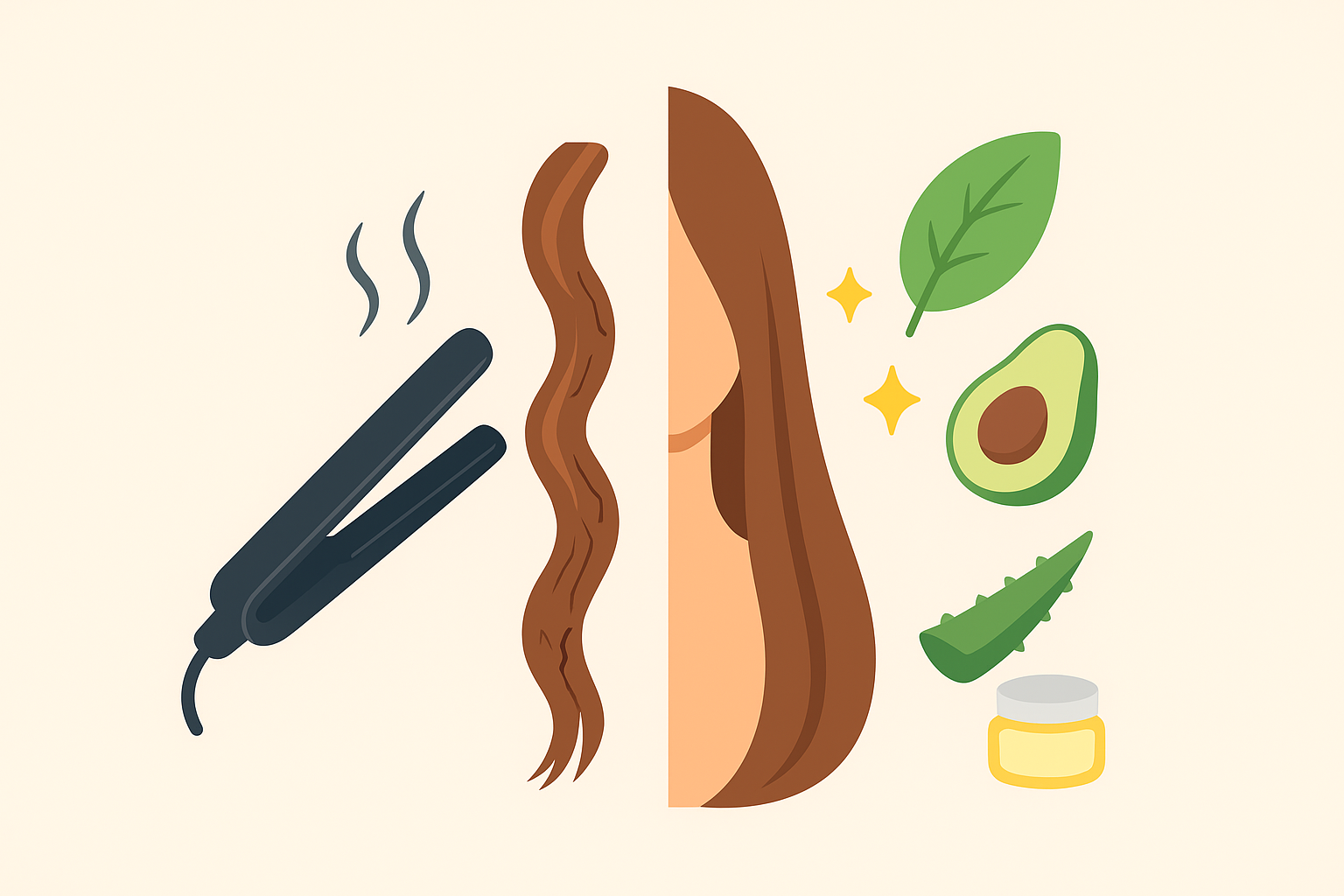In today’s beauty culture, heat tools like straighteners, curling irons, and blow dryers are staples in many routines. But over time, they lead to heat styling damage that weakens your hair’s structure and causes breakage, dryness, and hair loss. If you’re wondering how to fix damaged hair at home without expensive salon treatments, you’re in the right place.
Based on natural healing insights from Dr. Barbara O’Neill, this guide explores natural ways to repair heat-damaged hair, promote regrowth, and protect your locks from future damage.
Understanding Heat Damage
Heat styling tools can reach temperatures up to 450°F, stripping hair of its natural oils and degrading its keratin protein. This results in:
- Dry, brittle hair
- Split ends
- Thinning and breakage
- Increased hair fall
- Loss of natural curl pattern (especially in curly hair)
If you’re experiencing any of these symptoms, you may need a repair for heat damaged hair strategy that works from the inside out.
How to Treat Damaged Hair at Home Naturally
1. Deep Conditioning with Heat Caps
According to Dr. Barbara O’Neill, using natural oils like coconut oil, olive oil, and castor oil under gentle heat helps the nutrients penetrate deeper into the scalp and hair shaft. Use a thermal cap for hair treatment and deep conditioning or wrap your oiled hair in a warm towel for 20–30 minutes once a week.
- Does heat help condition hair? Yes! Moderate warmth opens cuticles for better absorption, enhancing the effect of your treatments.
2. DIY Hair Masks for Repair
Use natural masks made of:
- Egg yolk (rich in protein)
- Yogurt (hydrates and strengthens)
- Aloe vera gel (soothes scalp and promotes shine)
These are excellent damage hair care tips at home and offer an affordable way to heal damaged hair naturally.
3. Natural Hair Oils for Hair Repair and Regrowth
If you’re looking for trusted oil remedies, consider:
- Hair growth – known for herbal blends targeting hair thinning. focuses on root strengthening and shine traditionally used for heat repair for hair and regrowth.
Apply warm oil using your fingertips, massaging the scalp gently to boost blood circulation—this is a proven method for hair repair regrowth.
Protecting Hair from Future Heat Damage
Avoid Daily Heat Styling
Cut down usage to 1–2 times a week. Always use low to medium settings on blow dryers and flat irons.
Use Natural Heat Protectants
Skip chemical sprays. Dr. O’Neill suggests applying aloe vera gel or diluted coconut milk as natural heat barriers.
Trim Split Ends Regularly
Split ends travel upward if ignored. A quick trim every 6–8 weeks helps maintain strength and shape.
Special Tips for Curly and Colored Hair
Heat damage repair for curly hair is tricky because curls lose elasticity easily. To restore bounce:
- Avoid brushing when dry.
- Use leave-in conditioners with flaxseed or shea butter.
- Limit heat use and opt for air drying when possible.
Thermal Treatments: Are They Worth It?
Salon treatments like thermal keratin treatments are marketed as quick fixes, but they often include formaldehyde-based ingredients that further damage the scalp and hair.
Instead, invest in heat therapy for hair growth using steam caps or hot towel wraps combined with natural oils—a method strongly encouraged by Dr. O’Neill.
If you’re exploring affordable options in Pakistan, look for thermal cap for hair treatment, scalp massager, or heat cap for hair treatment on platforms like Daraz.
Conclusion: From Damaged Hair to Healthy Hair
You don’t need expensive serums or harsh chemical treatments to reverse heat styling damage. By adopting natural hair care tips, incorporating herbal oils, and limiting styling frequency, you can nourish your strands and restore shine and strength over time.
Remember: healthy hair starts with a healthy lifestyle, nutrient-rich diet, and natural self-care practices.



